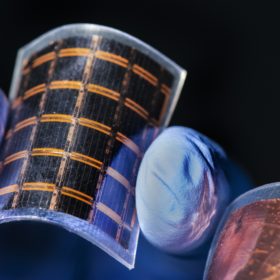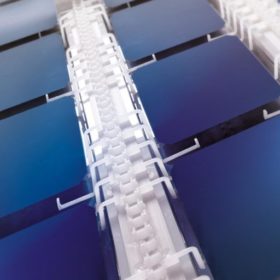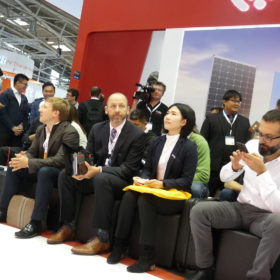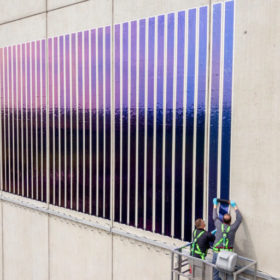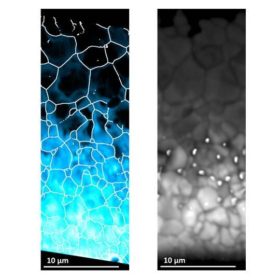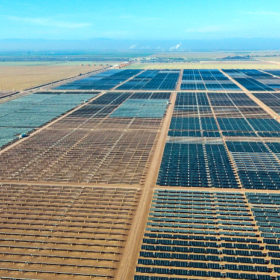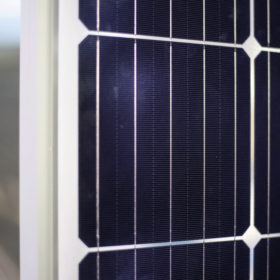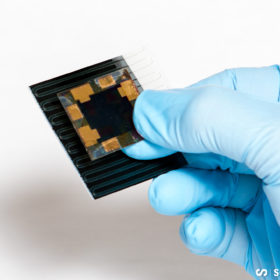Sensing an opportunity for indoor PV
A new paper published by scientists from the Massachusetts Institute of Technology examines the potential for integrating small solar cells into the wireless sensors needed to power the fast-growing internet of things (IoT) ecosystem, many of which are located indoors. This market could represent a unique opportunity for thin film PV technologies, and perovskites in particular, to reduce the risk inherent to ramping up commercial scale production.
ClearVue inks solar strip module supply deal with BeyondPV
Western Australia-based solar glass developer ClearVue has signed a deal with Taiwanese thin-film solar module manufacturer BeyondPV to set up a dedicated production line for solar strip modules at its production facility in the city of Tainan.
Hanergy wraps 460 kW of CIGS around Chinese skyscraper
Copper indium gallium selenide thin film technology is on the fly as conversion efficiency closes in on that of crystalline silicon. The technology can be integrated neatly onto facades of otherwise energy intensive commercial buildings. The potential is huge even if the conversion efficiency retains some limitations.
German PV equipment suppliers export 99% of their products
First-quarter figures from German engineering association the VDMA showed that, while orders picked up after a slow end to last year, almost all PV production equipment produced in the country is shipped abroad, with China the leading destination.
Hanergy’s $1bn HanTile announcement has turned out to be a typo
The thin film manufacturer says it has issued clarifications to media after pv magazine pointed out it had announced a blockbusting HanTile agreement in the wake of Intersolar Europe.
Heliatek and Lechwerke test PV facade on grain silo
The two companies have glued 230 square meters of solar film to the rough concrete surface of a grain silo in Donauwörth, Germany. The film is expected to generate approximately 6,700 kWh kilowatt-hours of solar power per year. Lechwerke and Heliatek want to open up new potential for the use of PV on other surfaces with the pilot project.
How selenium alloying gives CdTe thin film a boost
A new study conducted by an international team of scientists from leading institutions in the U.K. and the United States provides an explanation as to how the addition of selenide can greatly improve the efficiency of cadmium telluride solar cells. Explaining the performance boost will provide researchers with a route to explore further efficiency improvements, pushing the material’s cost even lower.
Solar Frontier becomes a unit of Idemitsu
The Japanese CIS solar module maker has been acquired — along with its parent company, Showa Shell Sekiyu — through a share exchange by Japanese oil refiner Idemitsu. The transaction was announced in mid-October, while the preliminary agreement was signed in July.
European researchers seek standard to assess short-circuit current temperature of PV devices
A European research team working on the EU-funded EURAMET ENG55 “PhotoClass” project has taken a step toward standardizing the measurement of the relative temperature dependence of the short-circuit current in different PV devices, although it applied completely different approaches.
Solliance claims 21.5% efficiency for perovskite CIGS cell
The European solar research organization, Solliance announced it has achieved a 21.5% efficiency for a flexible copper indium gallium selenide (CIGS) tandem solar cell based on perovskite.
